In the world of industrial pumps, understanding pump curves is not just a technicality; it’s an essential skill that ensures efficient performance and longevity of the equipment. Today, let’s dive deep into the world of pump curves, deciphering their importance, intricacies, and how they influence pump selection and operation.
The Vital Role of Pump Curves
Pump curves are more than just charts; they are the roadmap to selecting the right pump for any given industrial application. These curves indicate whether a pump can efficiently handle the required flow rate and pressure specific to a task. This is especially critical when dealing with various liquids, each with its unique characteristics.
Before You Read a Pump Curve
Before you attempt to interpret a pump curve, it’s imperative to understand several key factors:
-
Application specifics: What is the purpose of the pump?
-
Liquid properties: What type of liquid is being pumped?
-
Operational requirements: What are the viscosity, temperature, flow rate, and pressure requirements?
-
Technical specifications: What voltage and frequency are required for operation?
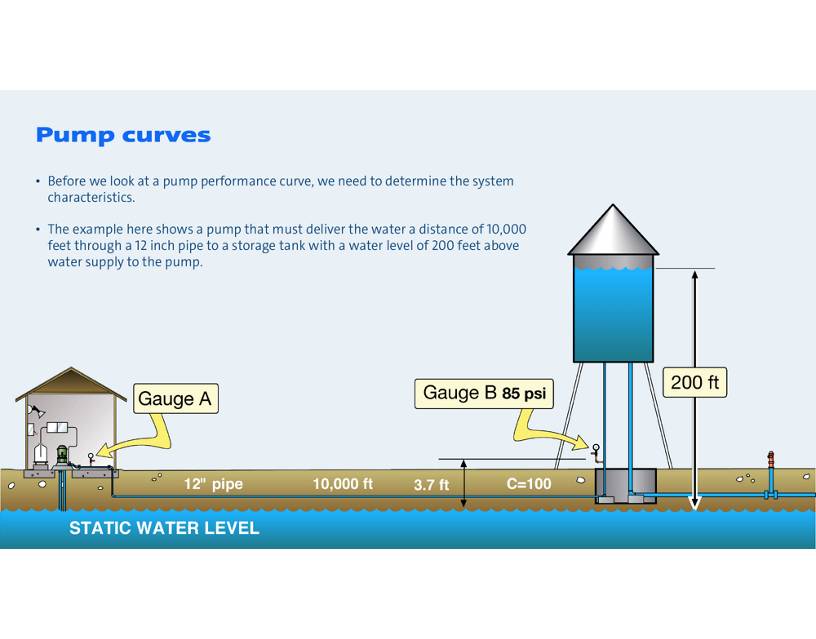
Deciphering the Curve
Pump curves usually plot the flow rate against pressure. This layout is essential for understanding how a pump will perform under different pressure levels. However, it's important to note that centrifugal pump curves, which are the most common, are typically based on water. Adjustments might be needed for fluids with different viscosities and specific gravities.
The Influence of Motor Speed and Frequency
The speed and frequency of a motor are not universal; they vary depending on the country. This variation significantly impacts the pump's flow rate and pressure. Understanding the relationship between motor speed, frequency, and pump performance is crucial for selecting the right pump, especially for international operations.
Total Dynamic Head (TDH)
The concept of Total Dynamic Head (TDH) is central to understanding pump operation on a curve. TDH includes static head, suction lift, and friction loss. It is vital for determining the exact operating point of a pump on its curve.
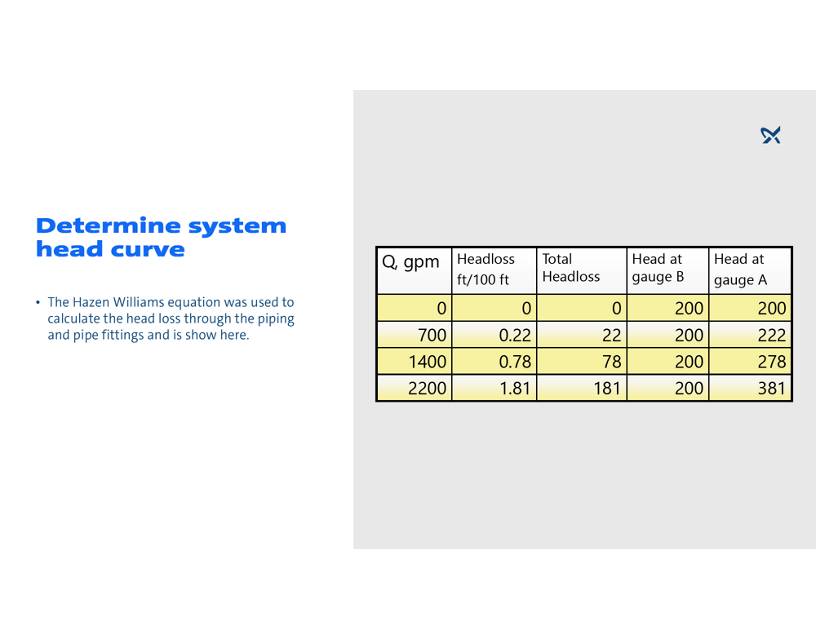
Static Head: The difference in height between the pump and point of discharge, which is usually a fixed distance and should be calculated as the maximum distance.
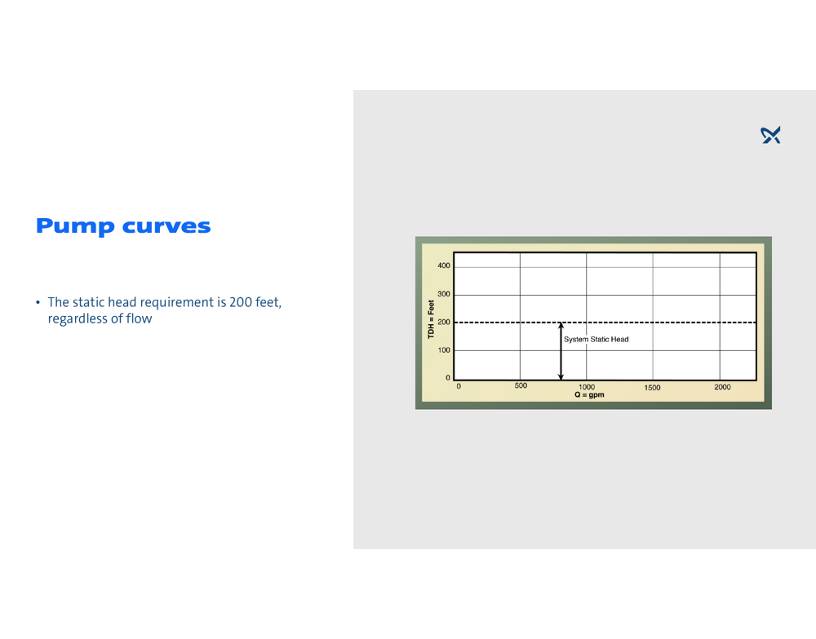
Suction Lift: The difference in height between the fluid and inlet of the pump. This should be calculated as the worst case i.e. lowest level of liquid in the tank
Friction loss – This is the total losses sustained by the liquid as it flows from the suction pipe to the point of discharge. Losses are incurred as the liquid flows through bends, valves, pipework which cause the liquid to dissipate energy losing momentum. Anything introduced within a fluids path will cause a pressure loss. The more viscous a liquid, the larger amount of energy dissipation and the more energy required to keep the fluid moving.
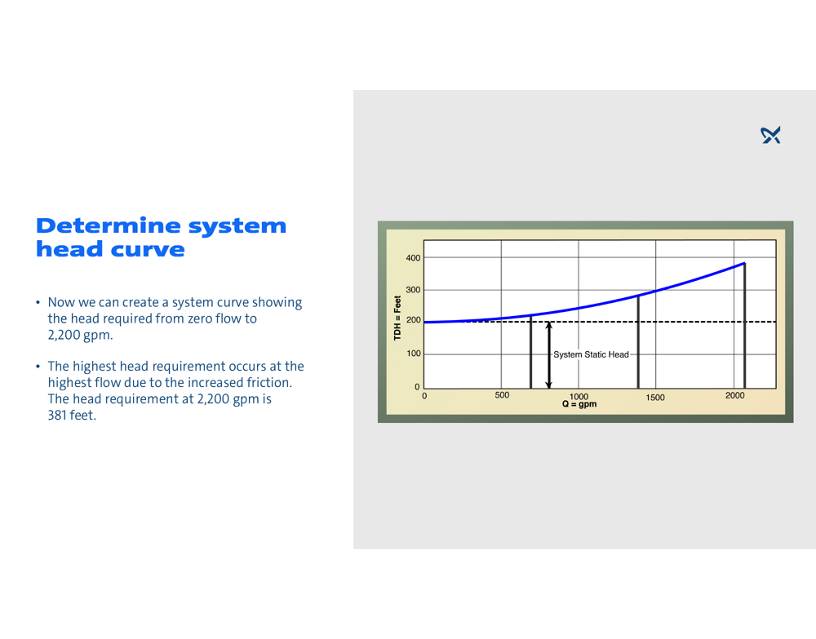
Chasing the Best Efficiency Point (BEP)
Ideally, pumps should operate close to their Best Efficiency Point (BEP), within two-thirds of their curve. Operating too far from the BEP can lead to issues like high temperature rise, cavitation, or reduced bearing and seal life.
Efficiency Matters
The efficiency of centrifugal pumps varies across the curve, usually peaking around the middle. The size of the impeller also plays a significant role in the pump's efficiency. The key is to find a balance between impeller size and desired efficiency.
Power Consumption and Motor Size
Understanding the power requirements at different points on the curve helps in selecting an appropriately sized motor. An oversized motor might compensate for various operational conditions but could also lead to increased energy consumption.
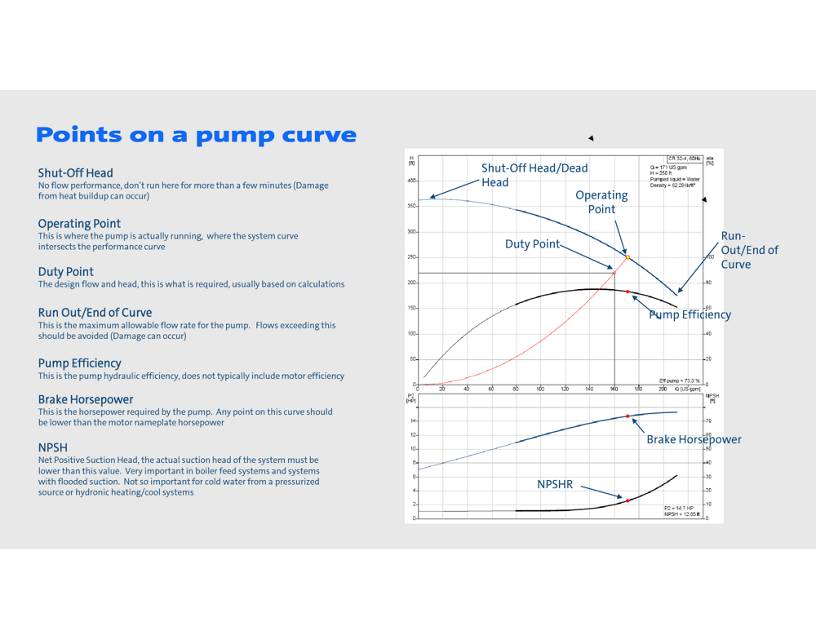
Navigating Net Positive Suction Head (NPSH)
NPSH is critical in avoiding cavitation — a phenomenon that can significantly damage the pump. Ensuring that the available NPSH is equal to or greater than the required NPSH is crucial for smooth operation.
The amount of NPSH required can be reduced by:
- Operating the pump closer to its best efficiency point
- Reducing the speed of the pump
- Adding more suction pressure by raising fluid level in any suction tanks or pipework
- Reducing the temperature of the fluid
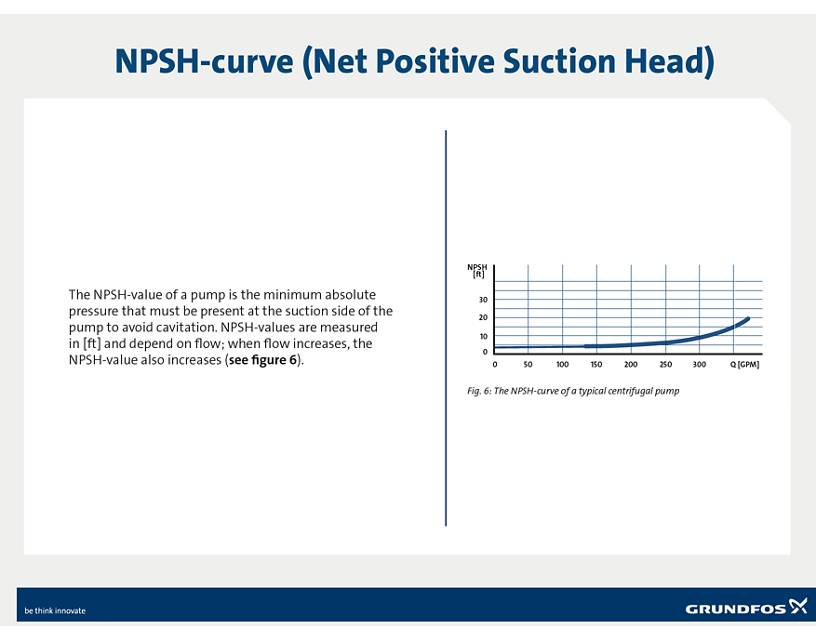
Cavitation
Cavitation is the process that occurs when a pumped liquid drops below its vapour pressure.
Cavitation can create holes in the pump casing causing the water to leak from the pump and a drop in the pumps efficiency. Cavitation can be reduced by:
- Operating the pump closer to its best efficiency point
- Reducing the speed of the pump. A slower motor means less NPSH is required.
- Add more suction pressure by raising fluid level in any suction tanks or pipework
- Reduce the temperature of the fluid
- Unclogging filters
- Checking discharge pressure
- Ensure air is not present in the liquid, or in suction pipework
The Role of Impeller Diameter
Different impeller diameters affect the flow and head characteristics of a pump. This factor is critical in pump selection and should be adjusted based on performance requirements.
Post-Installation Monitoring
Regularly checking the pump’s operation against the original curve after installation is key to ensuring it operates safely and efficiently.
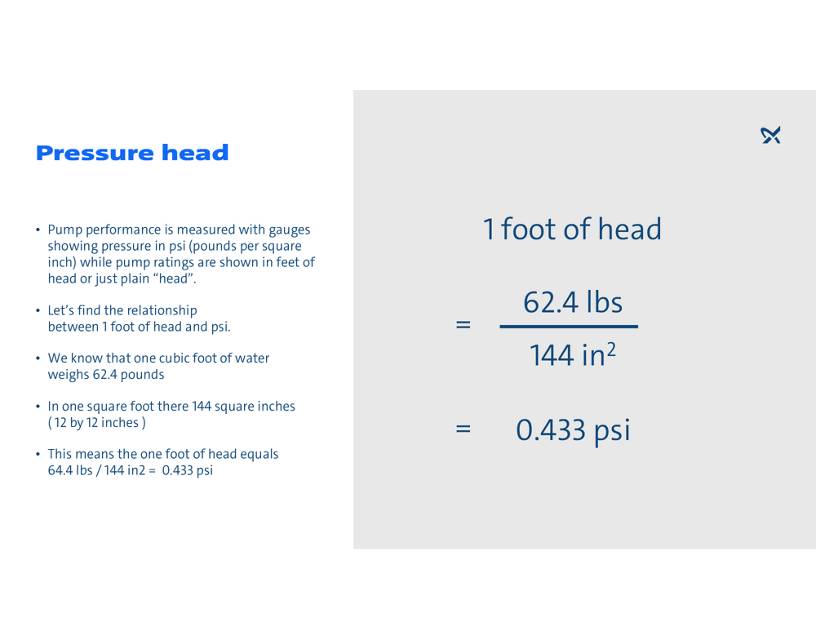
Seeking Technical Assistance
Understanding pump curves can be complex. Expert assistance is often available to help navigate these technical waters, ensuring that you select the right pump for your specific application.
In conclusion, mastering pump curves is a critical skill in the industrial pump sector. It not only ensures the selection of the right equipment but also guarantees efficient and long-lasting operation. Remember, the curve is not just a guide; it's the blueprint for optimal pump performance.












Leave a comment